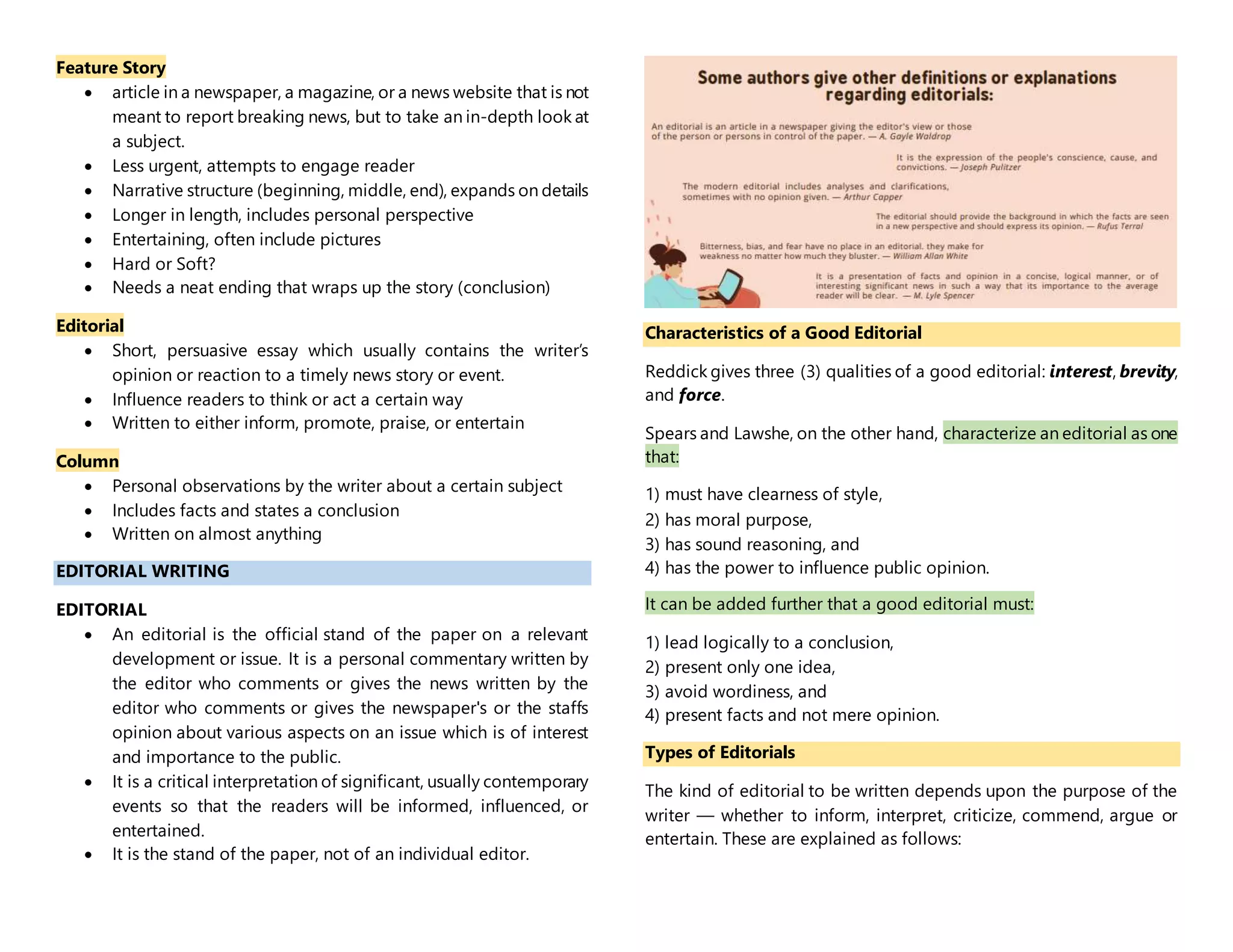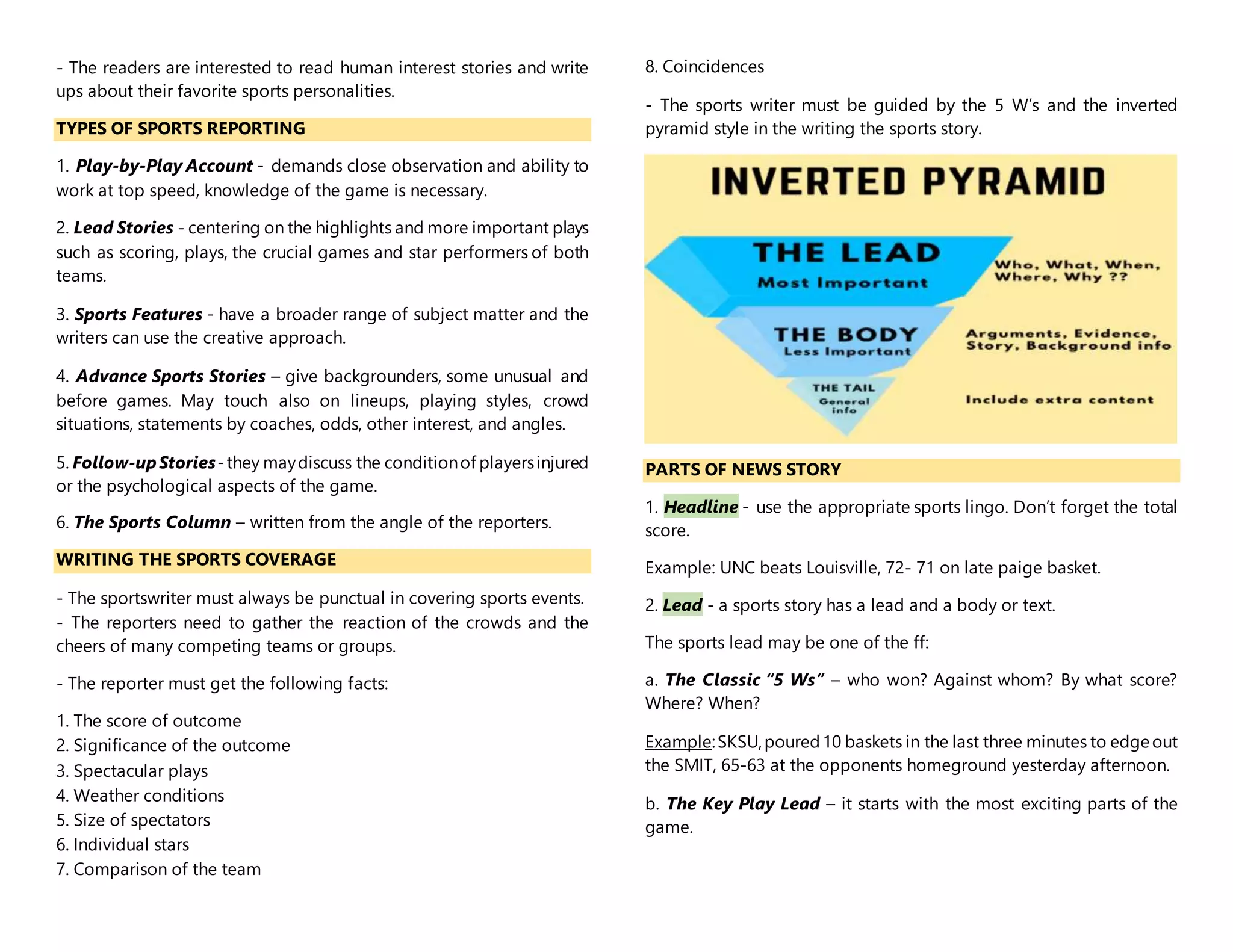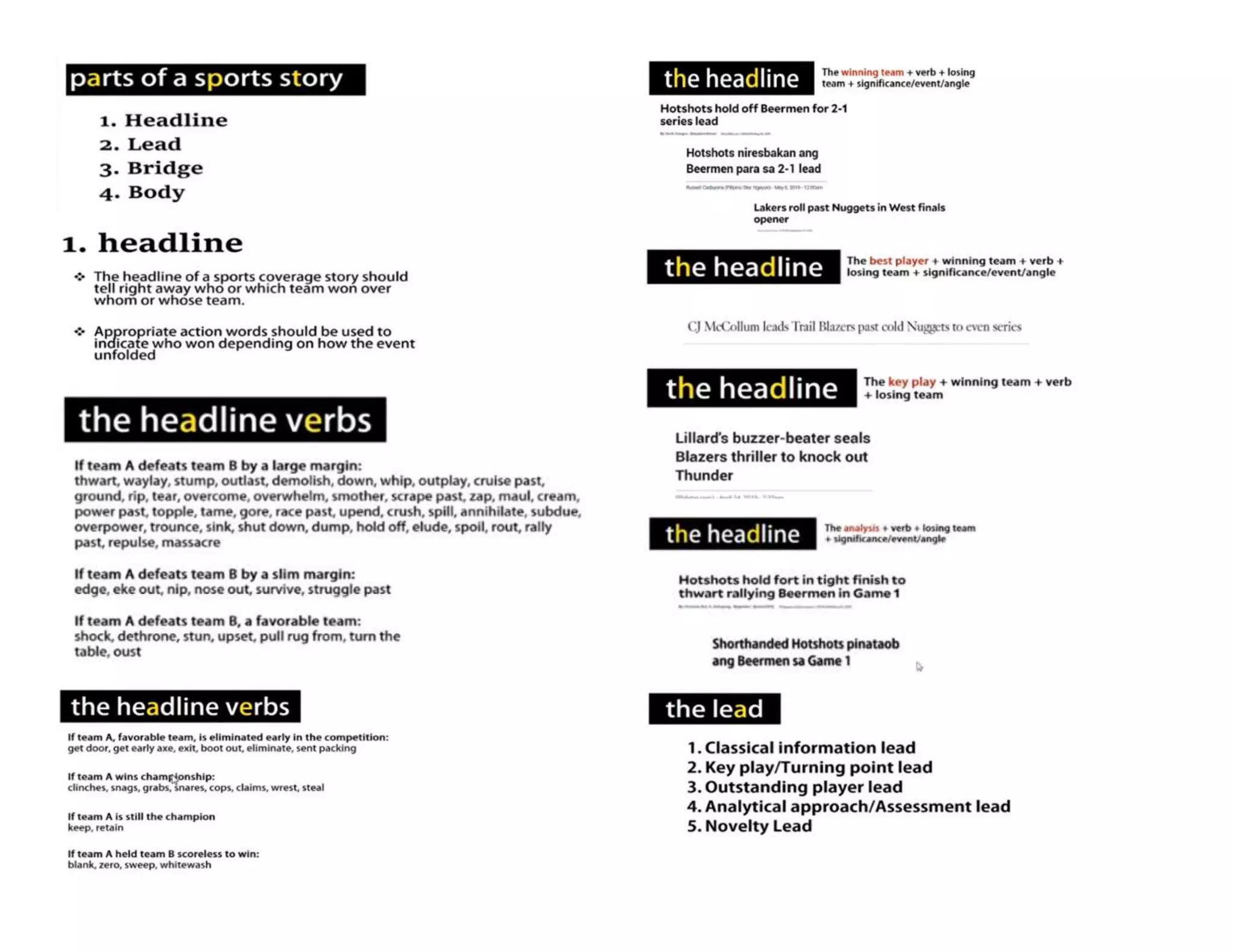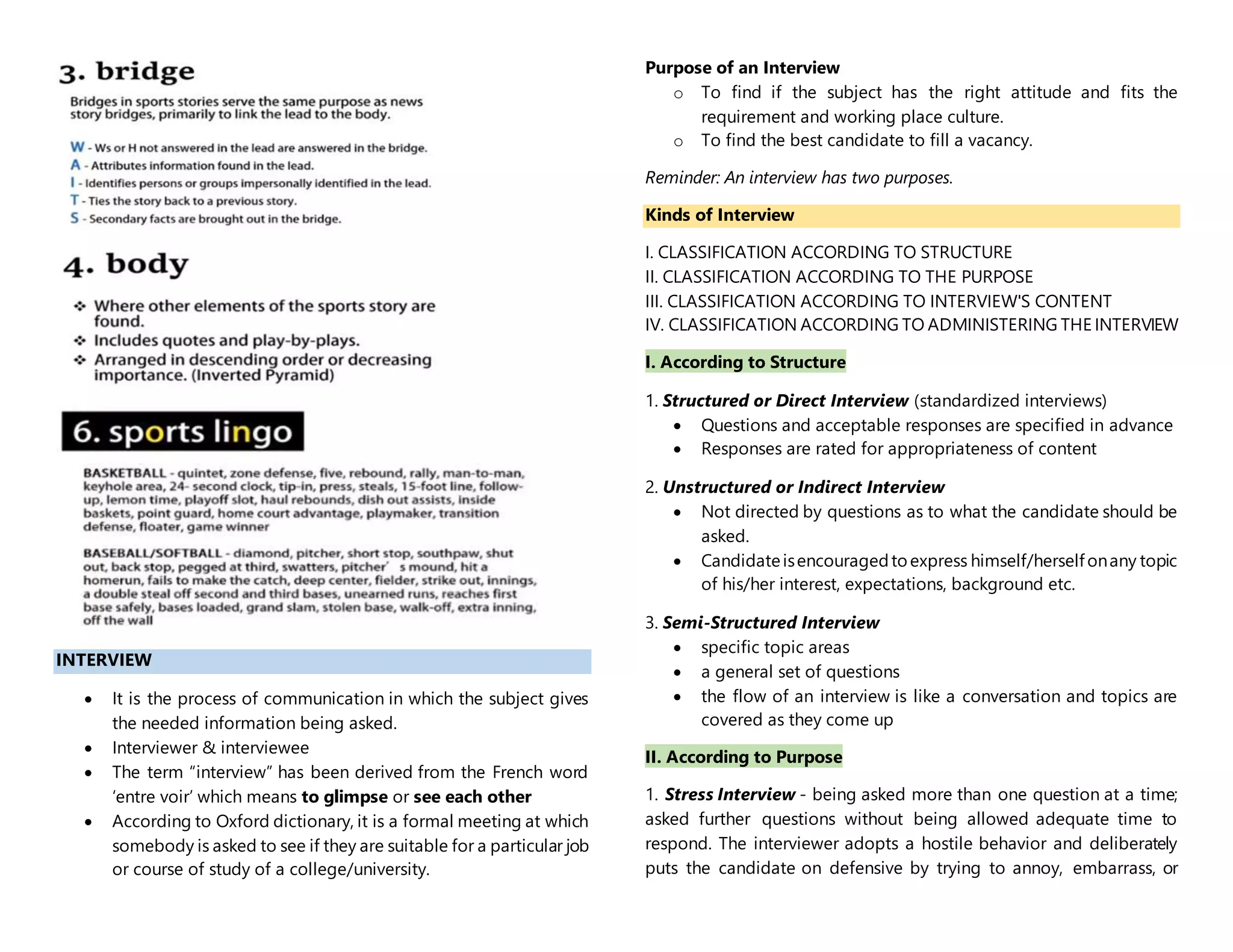This document provides an overview of different types of news stories, editorials, columns, and interviews. It discusses the key elements and purposes of news stories, editorials, features, columns, sports writing, and interviews. The main types of news stories covered are the basic news story, inverted pyramid style, hard news, and soft news. It also outlines the characteristics and types of editorials, columns, editorials cartoons, and sports writing. Finally, it discusses the different kinds and purposes of interviews, as well as tips for conducting and writing interviews.












